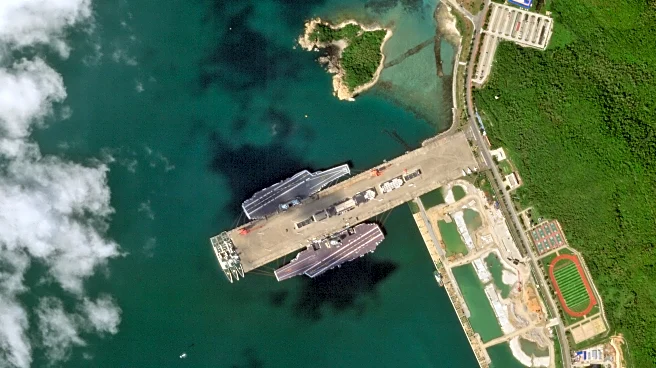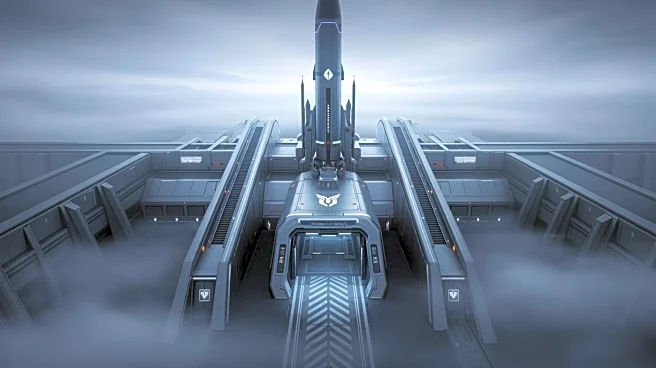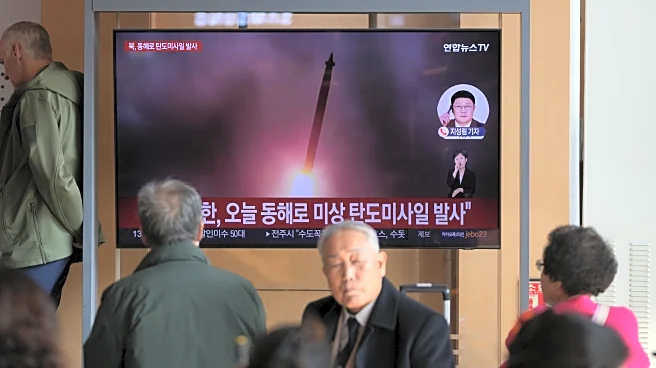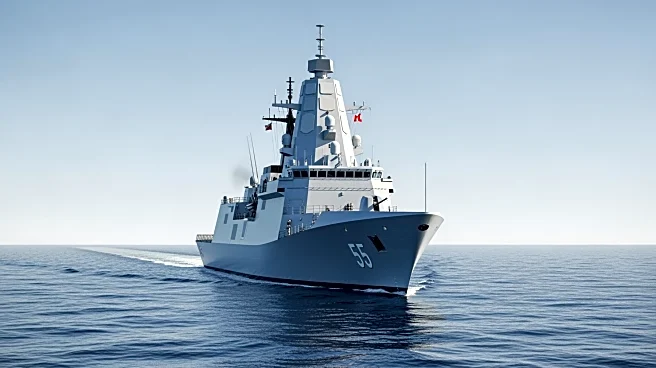What's Happening?
China has officially commissioned its latest and most advanced aircraft carrier, the Fujian, marking a significant milestone in its naval expansion efforts. The commissioning ceremony, attended by Chinese
leader Xi Jinping, took place at a military port in Sanya on Hainan island. The Fujian is China's third aircraft carrier and features advanced electromagnetic catapults, a technology that allows aircraft to take off with heavier loads. This development is part of China's broader strategy to modernize its military capabilities and challenge the United States' naval supremacy. The Fujian's entry into service highlights China's rapid naval build-up, which now boasts the largest navy in terms of ship numbers, although the US maintains a technological edge.
Why It's Important?
The commissioning of the Fujian underscores China's growing military ambitions and its strategic focus on enhancing its naval capabilities. This move is likely to increase tensions in the Indo-Pacific region, where the United States and its allies are already wary of China's expanding military presence. The Fujian's advanced technology, comparable to that of the US Navy's latest carriers, represents a significant leap in China's naval capabilities. This development could prompt the US and its allies to accelerate their own naval advancements to maintain a strategic balance. The Fujian's entry into service also reflects China's commitment to becoming a dominant maritime power, which could have far-reaching implications for global naval dynamics.
What's Next?
As China continues to expand its naval capabilities, the United States and its allies may need to reassess their strategic positions in the Indo-Pacific region. The commissioning of the Fujian could lead to increased military exercises and deployments by both China and the US, potentially heightening tensions. Additionally, China's ongoing efforts to build more advanced carriers, including a nuclear-powered one, suggest that the naval competition between the two superpowers is likely to intensify. This could result in a regional arms race, with countries in the Indo-Pacific region seeking to bolster their own military capabilities in response to China's growing influence.













